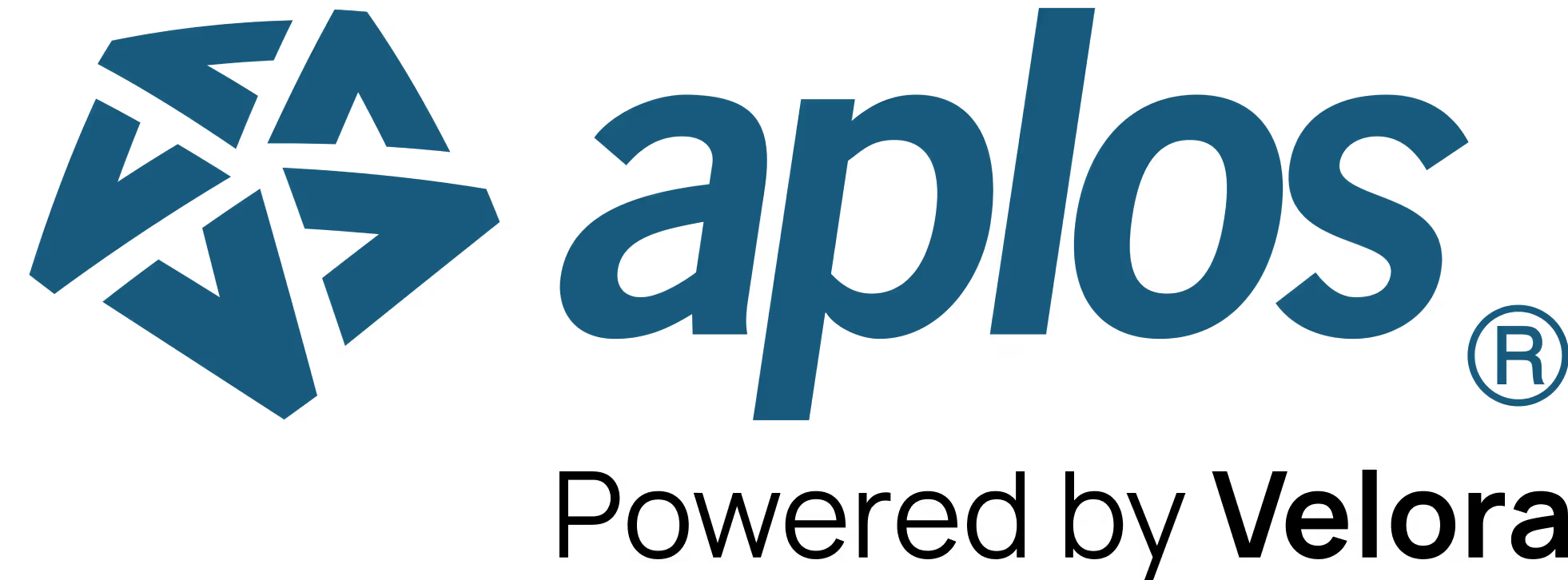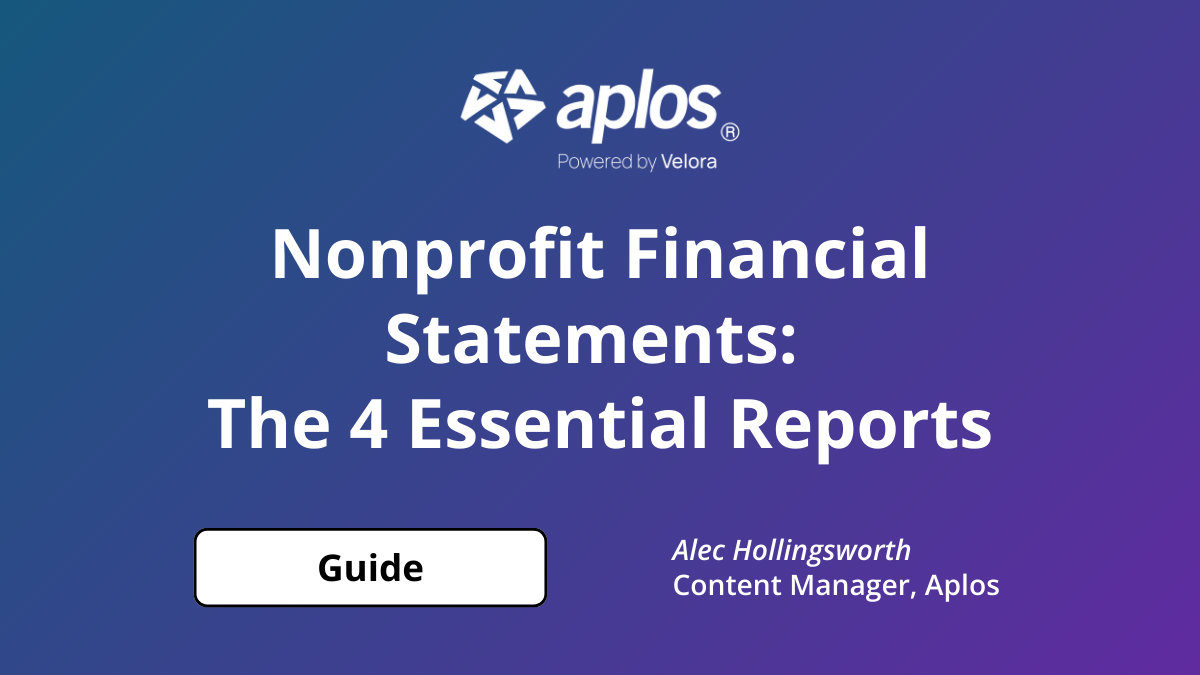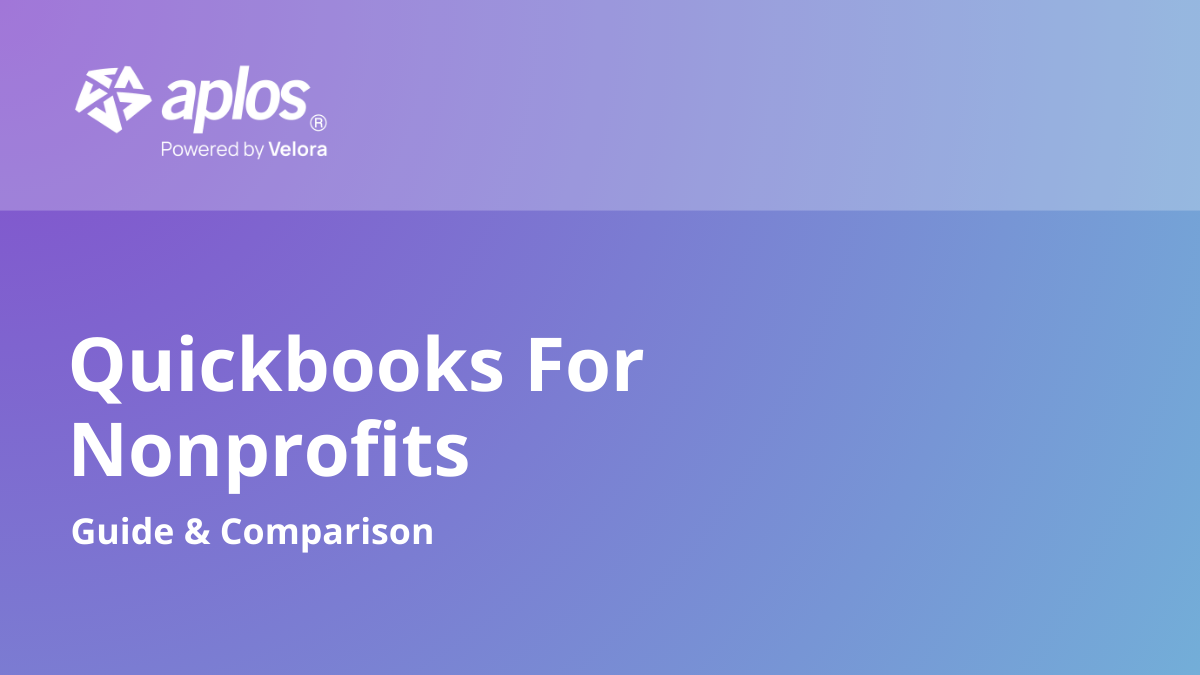
How to Use Fund Accounting to Track Your Grants

Being awarded a grant is a great honor for nonprofits. The application process takes hard work, and there is often a lot of competition. But what happens after your organization is awarded a grant? There are many resources regarding the grant application process but very few on how to account for and track a grant after you receive it. If your nonprofit organization receives a grant, you will need to demonstrate accountability for how that money is spent, which means you will need to use fund accounting to track those dollars.
Manage your accounting, reporting, and more with Aplos. Try it free for 15 days.
What Is Fund Accounting?
For-profit accounting and nonprofit accounting are quite different, as most nonprofit leaders, financial officers, and board members understand. For-profit businesses focus on being profitable, as the term suggests. But a nonprofit organization has a mission it is working to fulfill, and part of the job is raising money to fulfill that mission.
Money can come from various revenue streams, such as donations or grants, which the nonprofit then has to show accountability for. Part of that transparency involves having various funds in their accounting structure, and those funds hold money for different areas or purposes in their organization. Each fund needs to be tracked separately from everything else in the accounting, almost as if it is its own separate bank account.
Tracking Grant Money Using Fund Accounting
Any grant money an organization receives needs to be set apart as its own fund so it can be tracked accurately. From this fund, you will be able to keep track of how much money you have available at any given time, see how much you spend, and ensure that your organization spends that money according to the grant designations.
Grants are typically a contract between the grantor that provides the funds and the organization that receives the funds. Grants are generally restricted to a specific purpose, program, and/or time period, meaning they come “with donor restriction” and must be tracked as such in the accounting. These donor restrictions will be explained in the gift instrument, or award letter, that accompanies the grant and specifies how the funds must be used.
To demonstrate that the funds are used accordingly, your organization needs to appropriately report on your financial statements how those dollars are being spent. Any expenses that qualify under the grant designation need to be clearly tracked.

How Tracking Grant Money Can Get Complicated Quickly
For example, let’s say a nonprofit aims to help kids in their local elementary schools make healthier choices when it comes to fitness and nutrition. The organization incentivizes kids to walk or ride their bikes to and from school so they get more physical activity. The organization also runs workshops that teach these kids about the food they eat and why it is important to eat more vegetables and fewer fast-food meals.
This organization receives a grant from a medical group that focuses on nutrition and balanced eating. The gift instrument specifies the money from the grant must be used for nutrition training, and the money must be spent over the following school year.

In this case, the nonprofit would have to keep track of the grant funding, and they would have to prove on their financial reports that the money from the grant went to expenses that were specific to the nutrition portion of their mission. Those funds would be classified “with donor restriction,” which means the nonprofit would not be able to use that money for the fitness part of their cause. The nonprofit would also have to show that they used the money for the intended purpose during the specified period of time.
Fund Accounting Software for Nonprofits
Some nonprofits may attempt to use multiple spreadsheets to show all the money going in and out of the fund, what the money is being used for, and when it is being spent. But that can get complicated and messy very quickly. While it is possible to do this in an elaborate spreadsheet system, it is highly inefficient and time-consuming.
To ensure that all your accounts are balanced and accurate, and that all your grant money is accounted for properly, nonprofit fund accounting software is highly recommended. Aplos Software was designed for nonprofits and their unique accounting needs. Nonprofits are required to use the accounting standards set by the FASB (Financial Accounting Standards Board), and Aplos has them built in to its cloud-based software.
Aplos can help you manage your nonprofit’s finances, fundraising, donors, supporters, and reporting—all from one platform. You will be able to track each grant separately, and the software will help you demonstrate transparency in how your organization spends the money it receives. You can also track every dollar your organization spends and show what area of your nonprofit it went to.
Aplos is a true fund accounting software. You can create a customized chart of accounts for any funds you need, including grants you may receive. You won’t need to create complicated workarounds or attempt to manipulate business accounting software to meet the needs of your nonprofit. It’s also simple to learn, and you don’t need an accounting degree to use it. We also offer fund accounting services to get you started.
Reporting on the Grant Funds Your Nonprofit Receives
Part of accepting a grant means generating reports about how your organization uses the money. Grants can be very precise regarding the restrictions for how the money must be used. As with the example above, a grant may require your nonprofit to use money on specific initiatives or programs. A grant may also specify that a percentage of the money you receive is used for a certain category of expenses. You will need to be able to generate detailed reports that show this information.


Aplos offers robust reporting so you can clearly show how money from a grant fits into the revenue your organization receives. You can also create multiple layers of reporting using tags that track grant funds, expenses, and initiatives. They will allow you to show the required details without using multiple spreadsheets to display the information you need.
Accounting for Grants in Your Budget
Receiving a grant will also affect your organization’s budget. You will need to account for the money you receive as you look forward to using it in the future, and you will need to compare your budget with your actual expenses to see how closely they align. Your organization could receive a grant that is required to be used over a long period of time, such as a few years. In that case, it would be helpful to create a multi-year budget so you can create a plan for how you will make the grant money last that long.

You will also want whatever system you use to have the capability of rolling up individual fund amounts into your overall fiscal year budget. Aplos can help you do all of these things in a single fund accounting software, regardless of the size of your nonprofit.
Fulfilling Your Mission
Success in the nonprofit world means fulfilling the mission you have set out to achieve, and Aplos wants to help you do just that.
Stop giving yourself reporting headaches trying to use multiple spreadsheets or business software that wasn’t built for nonprofits. Aplos can help you simplify your administrative work so you can focus on fulfilling your mission and making the world a better place. Get a live demo of Aplos Advanced Accounting and see for yourself.
Free Recorded Webinar: Advanced Tips for Budgeting
Since nonprofits focus on accountability rather than profitability, having a budget for your organization is crucial. But landing on the right budget for your organization may take some time and energy. During this webinar, we show you:
- Tips and tricks for creating a meaningful budget
- How to update the budget as circumstances change during the year (sometimes called a rolling forecast)
- How to report on variances in your budget
Looking for grant opportunities? Browse our free grant database for nonprofits on Keela.

Our comprehensive closeout services start at $399 per month that needs to be reconciled. Sign up before Jan 1st and pay just $199.50 per month!
Copyright © 2025 Aplos Software, LLC. All rights reserved.
Aplos partners with Stripe Payments Company for money transmission services and account services with funds held at Fifth Third Bank N.A., Member FDIC.
Copyright © 2024 Aplos Software, LLC. All rights reserved.
Aplos partners with Stripe Payments Company for money transmission services and account services with funds held at Fifth Third Bank N.A., Member FDIC.



.png)



